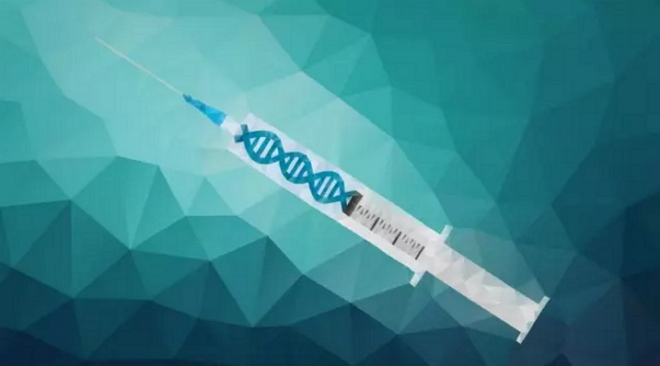

There’s very good news for Alnylam (and their partner Sanofi) this morning. They’ve been working on an RNAi approach to hemophilia (fitusiran), targeting expression of antithrombin, a protein which as the name implies which keeps blood from clotting by several different mechanisms. The clinical data that have just come out look very encouraging, with bleeding events in the treated patients reduced very sharply, and no bad events on the other side (inappropriate blood clotting). That’s always a concern, whether you’re trying to allow blood to clot (as in treating hemophiliac patients) or trying to keep it from clotting (as in many cardiovascular disease patients). There’s often not much room in the “just right” zone of blood behavior, and if you try to treat too aggressively you can push patients over into trouble on the other side of the clotting/bleeding line.
Making things more complicated in the hemophilia area is how different patients react. Hemophilia A is caused by deficiencies in Factor VIII activity, so the standard therapy for these patients has been infusion of functional Factor VIII. The problem is that over time about a third of the patients develop antibodies to the infused protein, and then they’re really in some trouble. None of the treatment options after that are particular appealing, nor are they particularly effective. (Meanwhile, hemophilia B is caused by defective Factor IX, and is, as you’d guess, treated by infusions of the active form of that protein). Alnylam’s therapy seems to be effective on both types of the disease, and if it continues performing like this it will be a great step forward for RNA interference as well as for hemophiliac patients.
There’s a lot of activity in hemophilia these days. Roche is developing an antibody, emicizumab, that treats hemophilia B by a different mechanism. It binds to both the Factor IX and Factor X proteins in the blood, which is what the (missing/defective) Factor VIII does normally, so it recapitulates the normal blood-clotting state. Patients who have developed antibodies to Factor VIII are still treatable with Roche’s antibody, which is good news for them. Many of these patients are taking a therapy from Shire, FEIBA, a “bypassing agent” which is a mixture of protein factors that can overcome the Factor VIII inhibiting antibody pathway. And now we talk money.
Hemophilia is an eleven billion dollar market. Shire believes that Roche is coming to take a big part of it, and they’re fighting back against what they see as marketing tactics that go over the line. Roche has apparently blamed some of the bad events in their own antibody trials on those patients also taking Shire’s FEIBA, and Shire has taken them to court, saying that they are illegally disparaging them and their product. They’ve won an injunction in Germany, although Roche can appeal. No matter what, it looks like Shire’s position in the hemophilia market is set to erode in the coming years, and if Alnylam and Sanofi can succeed in their program, they will be looking to erode Roche’s newfound position as well. Update: see below!
And that brings up the topic of rare diseases again and their treatment. You can imagine a hierarchy of treatment options for gene-defect diseases, ranging from “nothing” to “total cure forever”, going something like this:
Level One: you have a serious genetic disease. There is nothing that can be done. Condolences on your misfortune.
Level Two: Some of the symptoms of your serious disease can be ameliorated, although the underlying cause is untouched. Your life will improve, to some degree, but will almost certainly not be lengthened.
Level Three: Some of what your body is missing due to genetic mutation can be replaced. With what may be rigorous attention to dosing and other factors, your life will improve, and may well be lengthened, although the underlying cause of your disease is still there at all times. It is possible that your body may become resistant to such treatment, in which case you’re back to Level Two or even Level One.
Level Four: A great deal of what your body is missing due to genetic mutation can be replaced or reversed. You will not quite return to the full functioning of a person who was born without this disease at all, and the therapy itself may cause some problems of its own, but you will be far healthier (and longer-lived) than you would be with any therapy short of this type.
Level Five: Your genetic defect can be completely restored. Such therapy may well be difficult and hard to tolerate while it’s going on, but at the end of it you will be cured and brought back to full function. (I’m tempted to add a Level Five-A, where the defective is also removed and replaced in your germ cells, so you will not pass it on in any form to your descendants).
A lot of rare genetic disorders are just flat Level One. Almost all the rest are at best Level Two – some palliative care or treatment of secondary problems, but nothing to stop the march of the underlying pathology. For a long time, the only Level Three diseases were type I diabetes (which I must note is stretching the definition of “rare genetic disease”), hemophilia, and select few others, with some of these arguably shading over into Level Four (often depending on how severe things were with each individual patient to start with). At any rate, getting to Level Four is a rare event across the whole rare-disease landscape. And Level Five is gene therapy in most cases, although if you want to bring in something like Type I diabetes or Parkinson’s, it would also include some sort of perfectly functional permanent cell transplantation, too. At any rate, Level Five cures are only at the barest fringes of starting to possibly exist at the moment, and that only in a few cases. But that’s clearly the place to be eventually.
Now let’s talk money again. From that standpoint, since these categories ratchet up in utility and impact at every stage, the value to the patient (and to society and to insurance payers) goes up proportionally, too. Level Two is a lot better than nothing at all, and Level Three blows Level Two out of the water. Level Four is clearly superior to Level Three, and worth paying for by any definition. And Level Five clears the field of anything else, if it’s truly available. The problem is, there aren’t a lot of genetic disorders for which we know enough to do those Level Three and Level Four therapies. We do, in more cases, know exactly which genes are defective, though, so if we could just work Level Five magic we could skip all that other stuff. But we can’t quite do that yet, although the CRISPR people and others are banging away at as we speak.
This means that the companies driving towards those valuable (but not quite curative) therapies are always looking over their shoulder at others who might be coming along with something more powerful. And everyone has their eye on the gene-therapy level of things, which will completely upend the therapeutic options (and markets) wherever it comes into play. Depending on your sensibilities, this might all seem like an ugly scramble for money. But step back and look at this picture: here are all these companies, spending vast amounts of time and money and effort, trying to outdo each other on what benefits they can bring to patients. Time for Adam Smith again: “It is not from the benevolence of the butcher, the brewer, or the baker that we expect our dinner, but from their regard to their own interest.” The key is to set things up so that for a drug company their own interests align with the interests of the patients. George Merck had a point.
Update: just a couple of hours after I finished this post, Spark Therapeutics provided more details on their gene-therapy work on hemophilia B, which appears to be going very well in the limited number of patients who’ve been treated. That link provides an update on several other companies in the field as well. As it happens, BioMarin is presenting some of their gene therapy work on hemophilia A tomorrow. . .
